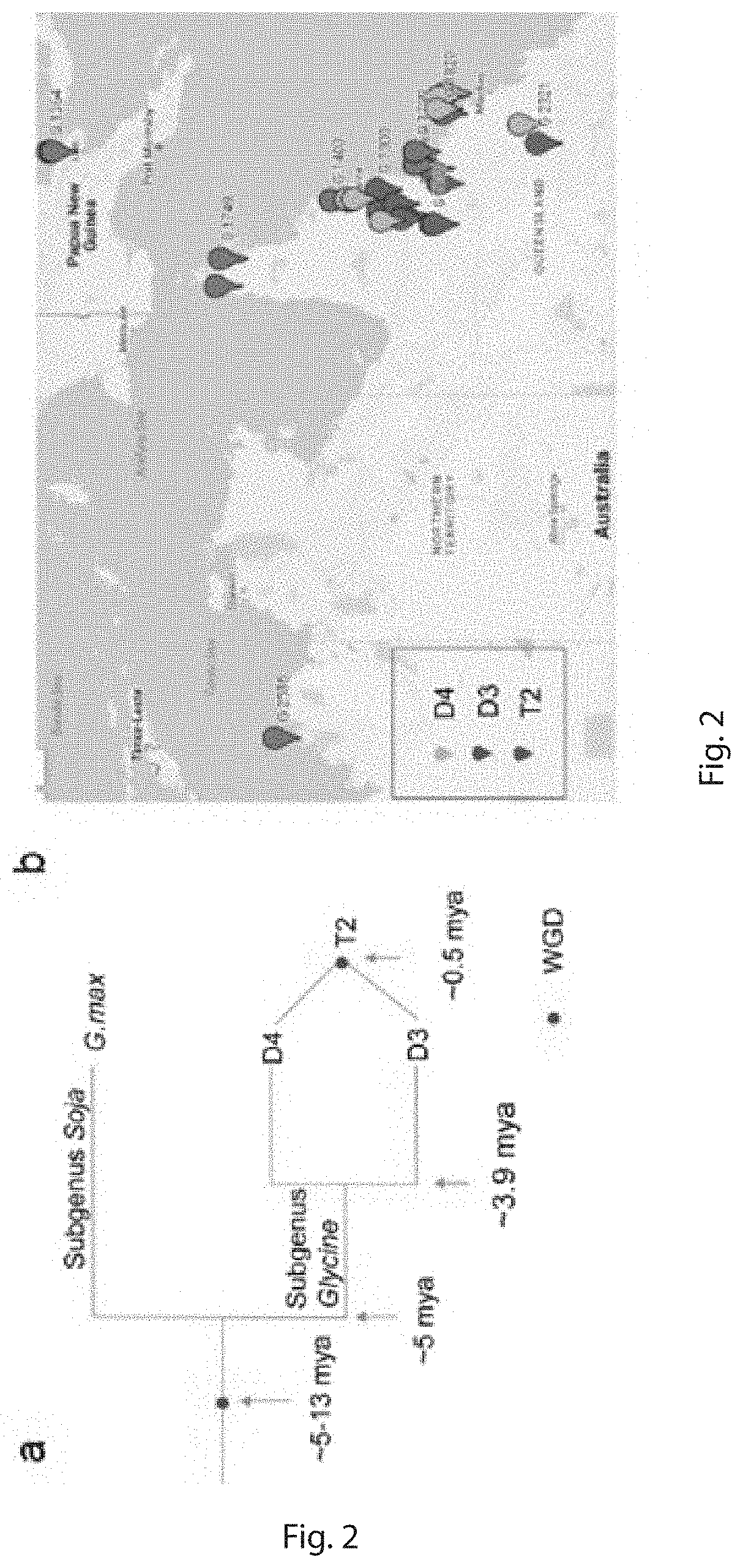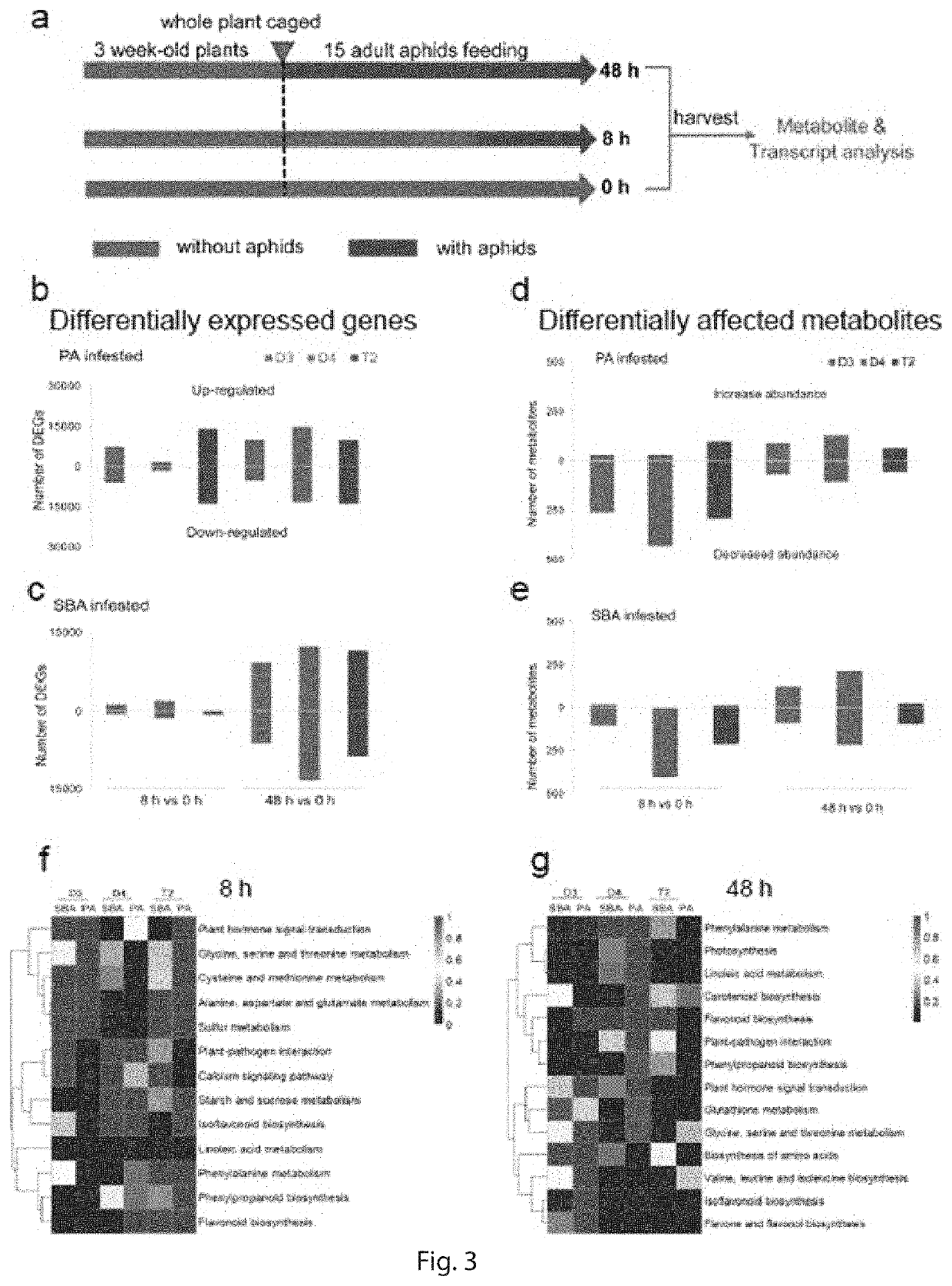Compositions and Methods of Increasing Aphid Resistance in Transgenic Plants
- Summary
- Abstract
- Description
- Claims
- Application Information
AI Technical Summary
Benefits of technology
Problems solved by technology
Method used
Image
Examples
example i
[0074]Plant defense responses often involve recognition of pest or pathogen attack by R proteins. Most R proteins contain a ligand recognition motif such as a leucine-rich repeat or a signal transduction domain such as the kinase domain (34). Sequences predicted to encode nucleotide binding sites and leucine zippers are shared among many resistance genes (35). Two well-studied examples of R-gene mediated resistance to aphids are the tomato Mi gene (36) and the melon Vat gene (37, 38), which confer resistance against Macrosiphum euphorbiae (potato aphid) and Aphis gossypii (cotton aphid), respectively.
[0075]Many specialized metabolites in plants, including glucosinolates, volatile terpenoids, and phenolic compounds, are dedicated to herbivore defense (39). Flavonoids also play an important role in the defense response of plants to insect attack. In several plant species, insect-resistant lines have constitutively more abundant flavonoids or induce them to a higher level in response t...
PUM
| Property | Measurement | Unit |
|---|---|---|
| Fraction | aaaaa | aaaaa |
| Electrical resistance | aaaaa | aaaaa |
Abstract
Description
Claims
Application Information
 Login to View More
Login to View More - R&D
- Intellectual Property
- Life Sciences
- Materials
- Tech Scout
- Unparalleled Data Quality
- Higher Quality Content
- 60% Fewer Hallucinations
Browse by: Latest US Patents, China's latest patents, Technical Efficacy Thesaurus, Application Domain, Technology Topic, Popular Technical Reports.
© 2025 PatSnap. All rights reserved.Legal|Privacy policy|Modern Slavery Act Transparency Statement|Sitemap|About US| Contact US: help@patsnap.com



